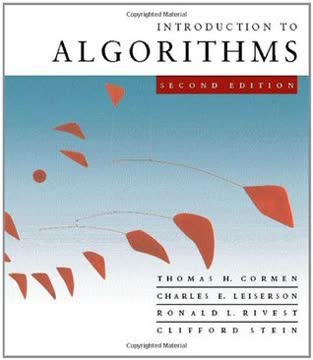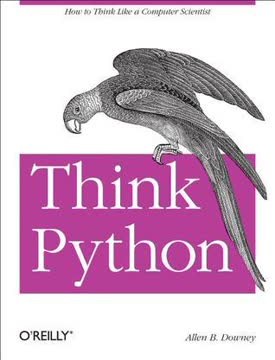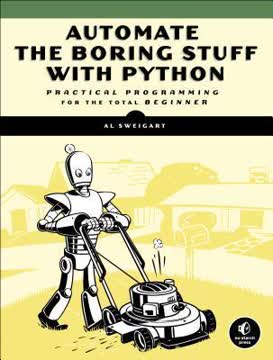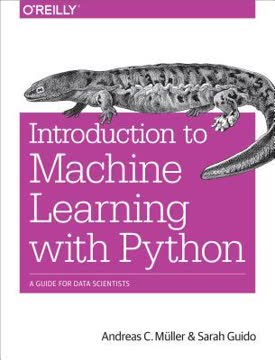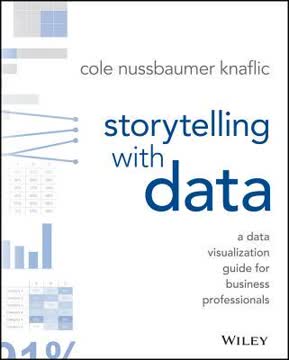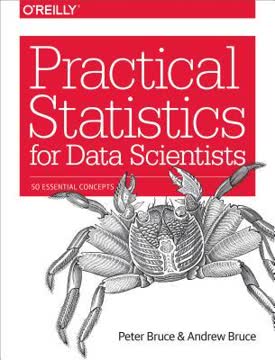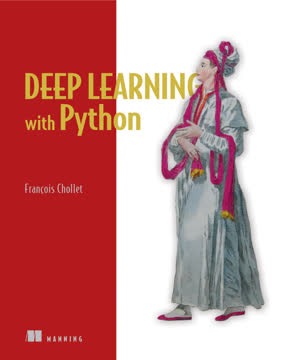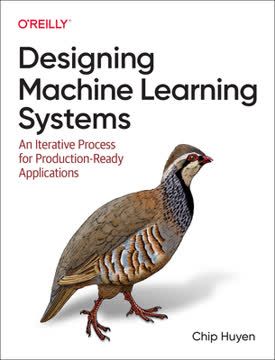اہم نکات
1۔ پائتھون کے اندرونی ڈیٹا سٹرکچرز اور فنکشنز میں مہارت حاصل کریں
پائتھون طویل عرصے سے خام ڈیٹا کو سنبھالنے کی زبان کے طور پر مقبول ہے، خاص طور پر اس کی سادہ اور مؤثر سٹرنگ اور ٹیکسٹ پراسیسنگ کی صلاحیتوں کی وجہ سے۔
بنیادی ستون۔ پائتھون کے اندرونی ڈیٹا سٹرکچرز جیسے کہ لسٹس، ٹپلز، ڈکشنریز، اور سیٹس ڈیٹا اینالیسس کی بنیاد فراہم کرتے ہیں۔ لسٹس اور ٹپلز ترتیب وار ڈیٹا کو محفوظ کرتے ہیں، جبکہ ڈکشنریز اور سیٹس تیز رفتار تلاش اور منفرد اقدار کے ذخیرے کی سہولت دیتے ہیں۔ یہ سٹرکچرز مختلف آپریشنز کی حمایت کرتے ہیں:
- لسٹ آپریشنز: append، extend، insert، remove
- ڈکشنری کے طریقے: keys()، values()، items()
- سیٹ آپریشنز: union، intersection، difference
پائتھون کے اندرونی فنکشنز جیسے len()، range()، zip()، اور enumerate() ڈیٹا کو مؤثر طریقے سے سنبھالنے کے طاقتور اوزار فراہم کرتے ہیں۔ لسٹ کمپری ہینشنز روایتی for loops کی جگہ ایک مختصر اور جامع طریقہ پیش کرتے ہیں۔
2۔ NumPy کا استعمال کرتے ہوئے مؤثر عددی کمپیوٹنگ کریں
NumPy اندرونی طور پر ڈیٹا کو ایک متصل میموری بلاک میں محفوظ کرتا ہے، جو دیگر پائتھون آبجیکٹس سے آزاد ہوتا ہے۔
اعلیٰ کارکردگی والے ارے۔ NumPy کا ndarray پائتھون میں عددی کمپیوٹنگ کی بنیاد ہے، جو درج ذیل خصوصیات فراہم کرتا ہے:
- بڑے ارے کو مؤثر طریقے سے ذخیرہ اور آپریٹ کرنا
- مختلف شکلوں کے ارے کے ساتھ کام کرنے کے لیے broadcasting کی صلاحیت
- ویکٹرائزڈ آپریشنز جو واضح loops کی ضرورت کو ختم کرتے ہیں
NumPy کے یونیورسل فنکشنز (ufuncs) جیسے np.sqrt()، np.exp()، اور np.maximum() تیز رفتار عنصر بہ عنصر آپریشنز فراہم کرتے ہیں۔ یہ فنکشنز پورے ارے پر بیک وقت کام کر سکتے ہیں، جو خالص پائتھون کے مقابلے میں کارکردگی کو نمایاں طور پر بہتر بناتے ہیں۔
لینیئر الجبرا آپریشنز، رینڈم نمبر جنریشن، اور فورئیر ٹرانسفارمز بھی NumPy میں دستیاب ہیں، جو اسے سائنسی کمپیوٹنگ اور ڈیٹا اینالیسس کے لیے ایک لازمی آلہ بناتے ہیں۔
3۔ pandas کا استعمال کرتے ہوئے ڈیٹا کی تبدیلی اور تجزیہ کریں
pandas کتاب کے باقی حصے میں ایک اہم آلہ ہوگا۔
تجزیہ کے لیے ڈیٹا سٹرکچرز۔ pandas دو بنیادی ڈیٹا سٹرکچرز متعارف کراتا ہے:
- Series: ایک جہتی لیبل شدہ ارے
- DataFrame: دو جہتی لیبل شدہ ڈیٹا سٹرکچر جس میں مختلف اقسام کے کالم ہو سکتے ہیں
یہ سٹرکچرز طاقتور انڈیکسنگ اور ڈیٹا الائنمنٹ کی صلاحیتیں فراہم کرتے ہیں۔ اہم خصوصیات میں شامل ہیں:
- غائب ڈیٹا کا سنبھالنا
- ڈیٹا سیٹس کو مرج اور جوڑنا
- ڈیٹا کی شکل بدلنا اور pivot کرنا
- ٹائم سیریز کی فعالیت
pandas مختلف ذرائع (CSV، Excel، ڈیٹا بیسز) سے ڈیٹا لوڈ کرنے میں مہارت رکھتا ہے اور ڈیٹا کی صفائی، تبدیلی، اور تجزیہ کے اوزار فراہم کرتا ہے۔ اس کا NumPy کے ساتھ انضمام ڈیٹا کی تبدیلی اور عددی کمپیوٹنگ کے درمیان آسان منتقلی ممکن بناتا ہے۔
4۔ matplotlib اور seaborn کے ذریعے بصری نمائندگی تخلیق کریں
matplotlib ایک ڈیسک ٹاپ plotting پیکیج ہے جو اشاعت کے لیے موزوں گراف اور شکلیں بنانے کے لیے ڈیزائن کیا گیا ہے۔
بصری ڈیٹا کی کھوج۔ matplotlib پائتھون میں MATLAB جیسا plotting انٹرفیس فراہم کرتا ہے، جو درج ذیل پیش کرتا ہے:
- لائن پلاٹس، اسکیٹر پلاٹس، بار چارٹس، ہسٹوگرامز، اور مزید
- حسب ضرورت پلاٹ عناصر (رنگ، لیبلز، لیجنڈز وغیرہ)
- ایک ہی شکل میں متعدد پلاٹ کی اقسام کی حمایت
seaborn، جو matplotlib پر مبنی ہے، درج ذیل فراہم کرتا ہے:
- شماریاتی ڈیٹا کی بصری نمائندگی
- خوبصورت پلاٹس کے لیے بلٹ ان تھیمز
- عام پلاٹ اقسام کے لیے اعلیٰ سطح کا انٹرفیس
یہ دونوں لائبریریاں مل کر اشاعت کے معیار کی بصری نمائندگی تخلیق کرنے کے قابل بناتی ہیں جو ڈیٹا کی کھوج اور پیشکش کے لیے بہترین ہیں۔ pandas کے ساتھ انضمام DataFrame اور Series آبجیکٹس کی آسان plotting ممکن بناتا ہے۔
5۔ وقت کی سیریز کے ڈیٹا کو مؤثر طریقے سے سنبھالیں
وقت کی سیریز کا ڈیٹا مختلف شعبوں میں ایک اہم ساختی ڈیٹا کی شکل ہے، جیسے کہ مالیات، معیشت، ماحولیاتی سائنس، نیوروسائنس، اور طبیعیات۔
وقتی ڈیٹا کا تجزیہ۔ pandas وقت پر مبنی ڈیٹا کے ساتھ کام کرنے کے لیے مضبوط اوزار فراہم کرتا ہے:
- DatetimeIndex اور PeriodIndex وقت کی بنیاد پر انڈیکسنگ کے لیے
- Resampling اور frequency conversion
- Rolling window حسابات
- ٹائم زون کا انتظام
یہ خصوصیات وقت کی سیریز کے ڈیٹا کا مؤثر تجزیہ ممکن بناتی ہیں، جن میں شامل ہیں:
- تاریخ کی حد کی تخلیق
- ڈیٹا کو شفٹ کرنا
- لیگنگ اور لیڈنگ آپریشنز
- مدت کی بنیاد پر تجزیہ
مختلف وقت کی فریکوئنسیز (روزانہ، ماہانہ، سہ ماہی) کو سنبھالنے اور کیلنڈر کی بنیاد پر حسابات کرنے کی صلاحیت pandas کو مالی اور اقتصادی ڈیٹا کے تجزیے کے لیے خاص طور پر مفید بناتی ہے۔
6۔ ڈیٹا کی جمع بندی اور گروپ آپریشنز انجام دیں
ڈیٹا سیٹ کو زمروں میں تقسیم کرنا اور ہر گروپ پر کوئی فنکشن لگانا، چاہے وہ جمع بندی ہو یا تبدیلی، ڈیٹا اینالیسس کے عمل کا ایک اہم جزو ہو سکتا ہے۔
گروپ کی بنیاد پر تجزیہ۔ pandas کی groupby فعالیت طاقتور ڈیٹا جمع بندی اور تبدیلی کی سہولت دیتی ہے:
- ایک یا زیادہ کلیدوں کی بنیاد پر ڈیٹا کو گروپس میں تقسیم کرنا
- ہر گروپ پر فنکشن لگانا
- نتائج کو نئے ڈیٹا سٹرکچر میں یکجا کرنا
عام آپریشنز میں شامل ہیں:
- جمع بندیاں: sum، mean، count وغیرہ
- تبدیلیاں: standardization، ranking وغیرہ
- گروپس پر حسب ضرورت فنکشنز کا اطلاق
یہ فعالیت بڑے ڈیٹا سیٹس کا خلاصہ نکالنے، گروپ کی سطح کے اعدادوشمار تیار کرنے، اور زمروں کی بنیاد پر پیچیدہ ڈیٹا تبدیلیاں کرنے کے لیے نہایت مفید ہے۔
7۔ pandas کو ماڈلنگ لائبریریز کے ساتھ مربوط کریں
pandas عام طور پر تاریخوں کے ارے کے ساتھ کام کرنے کے لیے موزوں ہے، چاہے وہ محور کی انڈیکس ہو یا DataFrame میں کالم۔
ماڈلنگ کے لیے ڈیٹا کی تیاری۔ pandas ڈیٹا کی تبدیلی اور شماریاتی ماڈلنگ کے درمیان آسان منتقلی فراہم کرتا ہے:
- pandas آبجیکٹس اور NumPy ارے کے درمیان آسان تبدیلی
- زمرہ جاتی ڈیٹا اور ڈمی ویریبل کی تخلیق کی حمایت
- Patsy کے ساتھ ماڈل فارمولا کی وضاحت میں انضمام
یہ خصوصیات statsmodels اور scikit-learn جیسی ماڈلنگ لائبریریز کے ساتھ بے جوڑ انضمام کی اجازت دیتی ہیں۔ pandas کے ڈیٹا سٹرکچرز کو آسانی سے مطلوبہ فارمیٹ میں تبدیل کیا جا سکتا ہے، جو ماڈلنگ کے عمل کو ہموار بناتا ہے۔
8۔ statsmodels کے ذریعے شماریاتی ماڈلنگ کا جائزہ لیں
statsmodels ایک پائتھون لائبریری ہے جو مختلف قسم کے شماریاتی ماڈلز فٹ کرنے، شماریاتی ٹیسٹ کرنے، اور ڈیٹا کی کھوج اور بصری نمائندگی کے لیے استعمال ہوتی ہے۔
شماریاتی تجزیہ کے اوزار۔ statsmodels وسیع پیمانے پر شماریاتی ماڈلز اور ٹیسٹ فراہم کرتا ہے:
- لینیئر ریگریشن ماڈلز
- وقت کی سیریز کا تجزیہ
- جنرلائزڈ لینیئر ماڈلز
- مفروضہ ٹیسٹ
یہ لائبریری فارمولا بیسڈ API (جو R کی طرح ہے) اور ارے بیسڈ API دونوں فراہم کرتی ہے، جو ماڈل کی وضاحت میں لچکدار ہے۔ اس کے علاوہ، یہ جامع ماڈل تشخیص اور نتائج کی تشریح کے اوزار بھی مہیا کرتی ہے۔
9۔ scikit-learn کے ذریعے مشین لرننگ نافذ کریں
scikit-learn پائتھون کی سب سے زیادہ استعمال ہونے والی اور معتبر جنرل پرپز مشین لرننگ ٹول کٹس میں سے ایک ہے۔
مشین لرننگ کے ورک فلو۔ scikit-learn مختلف مشین لرننگ کے کاموں کے لیے ایک مستقل API فراہم کرتا ہے:
- نگرانی شدہ سیکھنا: درجہ بندی، ریگریشن
- غیر نگرانی شدہ سیکھنا: کلسٹرنگ، ڈائمینشنلٹی ریڈکشن
- ماڈل کا انتخاب اور تشخیص
- ڈیٹا پری پروسیسنگ اور فیچر انجینئرنگ
اہم خصوصیات میں شامل ہیں:
- ماڈلز کے درمیان مستقل fit/predict API
- کراس ویلیڈیشن کے اوزار
- مکمل ورک فلو کے لیے پائپ لائن کی تخلیق
- وسیع دستاویزات اور مثالیں
یہ لائبریری pandas اور NumPy کے ساتھ انضمام کے ذریعے مشین لرننگ تکنیکوں کو ڈیٹا اینالیسس کے عمل میں آسانی سے شامل کرنے کی سہولت فراہم کرتی ہے۔
آخری تازہ کاری:
FAQ
What's Python for Data Analysis about?
- Focus on Data Manipulation: The book is centered on manipulating, processing, cleaning, and analyzing data using Python. It provides a comprehensive guide to the Python programming language and its data-oriented library ecosystem.
- Tools and Libraries: It emphasizes essential libraries like pandas, NumPy, and Jupyter, which are crucial for data analysis tasks. These tools are foundational for anyone looking to become an effective data analyst.
- Practical Approach: The book is designed to be practical, offering hands-on examples and code snippets that readers can directly apply to their data analysis projects.
Why should I read Python for Data Analysis?
- Comprehensive Resource: The book is a key resource for university courses and professionals, covering essential tools and techniques for data analysis in Python.
- Authoritative Source: Written by Wes McKinney, the creator of pandas, it offers insights directly from an expert, making it a valuable resource.
- Updated Content: The third edition is updated with current versions of Python, NumPy, and pandas, ensuring readers learn the most relevant practices.
What are the key takeaways of Python for Data Analysis?
- Data Wrangling Skills: Readers will learn how to manipulate and clean data effectively using pandas, focusing on reshaping, merging, and aggregating data.
- Understanding NumPy: The book provides a solid foundation in NumPy, crucial for numerical computing in Python, enhancing data analysis capabilities.
- Visualization Techniques: It covers basic data visualization using matplotlib, allowing readers to present their data analysis results effectively.
What are the best quotes from Python for Data Analysis and what do they mean?
- "Python has become a popular and widespread language for data analysis.": Highlights Python's growing importance in data science, indicating its value for future career opportunities.
- "It’s a good idea to be familiar with the documentation for the various statistics or machine learning frameworks.": Emphasizes the importance of staying updated with the latest tools and libraries in the evolving field of data science.
- "The programming skills you have developed here will stay relevant for a long time into the future.": Reassures readers that the skills learned will remain applicable, making it a worthwhile endeavor.
How does Python for Data Analysis approach data wrangling?
- Step-by-Step Guidance: The book provides a structured approach to data wrangling, starting with data loading and cleaning, making it easy to follow.
- Use of Real Datasets: By using real datasets, it allows readers to practice data wrangling techniques in a realistic context, reinforcing concepts.
- Focus on pandas: It extensively covers pandas, detailing its functionalities for data manipulation, crucial for effective data wrangling in Python.
What are the essential Python libraries discussed in Python for Data Analysis?
- NumPy: Fundamental for numerical computing, providing support for multidimensional arrays and mathematical functions, essential for efficient data manipulation.
- pandas: Emphasized for data manipulation and analysis, particularly for working with structured data, introducing key data structures like Series and DataFrame.
- matplotlib: Used for creating visualizations, the book provides guidance on using it to visualize data effectively.
How does Python for Data Analysis help with data cleaning?
- Data Preparation Techniques: Covers techniques for cleaning and preparing data, including handling missing values, filtering, and transforming data.
- Using pandas for Cleaning: Provides practical examples of using pandas to clean data, such as removing duplicates and filling in missing values.
- Real-World Examples: Includes real-world datasets and scenarios, allowing readers to see how data cleaning is applied in practice.
What is the significance of the DataFrame in Python for Data Analysis?
- Tabular Data Structure: DataFrame is a two-dimensional, size-mutable, and potentially heterogeneous tabular data structure with labeled axes.
- Data Manipulation: Allows for easy manipulation of data, including filtering, grouping, and aggregating, with numerous examples provided.
- Integration with Other Libraries: Integrates well with other libraries like NumPy and matplotlib, facilitating complex data analysis tasks.
How does Python for Data Analysis address missing data?
- Identifying Missing Values: Discusses methods for identifying and handling missing data, emphasizing the importance of recognizing missing values.
- Filling and Dropping: Covers techniques for filling missing values and dropping rows or columns with missing data, allowing for dataset-specific approaches.
- Using pandas Functions: Demonstrates how to use pandas functions like
isna()andfillna()to manage missing data effectively.
What is the groupby method in pandas as explained in Python for Data Analysis?
- Data Aggregation: The
groupbymethod is used to split data into groups based on criteria, allowing for aggregation and transformation. - Flexible Grouping: Supports grouping by one or more columns, with various aggregation functions like mean, sum, and count.
- Example Usage: For instance,
df.groupby("key").mean()computes the mean of each group defined by unique values in the "key" column.
How can I create a pivot table in pandas as described in Python for Data Analysis?
- Using
pivot_table: Allows summarizing data by one or more keys, arranging data in a rectangular format. - Aggregation Functions: Specify aggregation functions like mean, sum, or count to compute statistics for the pivot table.
- Example:
df.pivot_table(index="day", columns="smoker", values="tip_pct", aggfunc="mean")creates a pivot table showing average tip percentages by day and smoking status.
How do I visualize data using pandas as per Python for Data Analysis?
- Built-in Plotting: Pandas has built-in plotting capabilities through the
plotattribute, simplifying visualizations directly from DataFrames and Series. - Integration with Matplotlib: Integrates well with matplotlib, allowing for customization of plots using its extensive features.
- Example:
df.plot(kind="bar")creates a bar plot of the DataFrame, demonstrating the ease of visualization with pandas.
جائزے
پائتھون برائے ڈیٹا اینالیسس کو عموماً مثبت آراء حاصل ہوئی ہیں کیونکہ یہ کتاب پائتھون میں پانڈاز اور ڈیٹا کی ترتیب و تنظیم پر جامع روشنی ڈالتی ہے۔ قارئین اس کی عملی مثالوں اور واضح وضاحتوں کی تعریف کرتے ہیں، خاص طور پر ان افراد کے لیے جو دیگر پروگرامنگ زبانوں سے اس جانب منتقل ہو رہے ہیں۔ بعض نقادوں کا خیال ہے کہ کتاب میں پانڈاز پر زیادہ توجہ دی گئی ہے جبکہ وسیع تر ڈیٹا اینالیسس کے تصورات پر کم روشنی پڑی ہے، نیز بے ترتیب ڈیٹا سیٹس کے استعمال پر بھی تنقید کی گئی ہے۔ یہ کتاب ڈیٹا کی ترتیب و تنظیم سیکھنے کے لیے ایک قیمتی ذریعہ سمجھی جاتی ہے، تاہم تجربہ کار صارفین کے لیے یہ بعض اوقات طویل اور تفصیلی محسوس ہو سکتی ہے۔ مجموعی طور پر، یہ کتاب پانڈاز اور پائتھون پر مبنی ڈیٹا اینالیسس میں مہارت حاصل کرنے کے لیے ایک مفید رہنما تصور کی جاتی ہے۔
Similar Books
